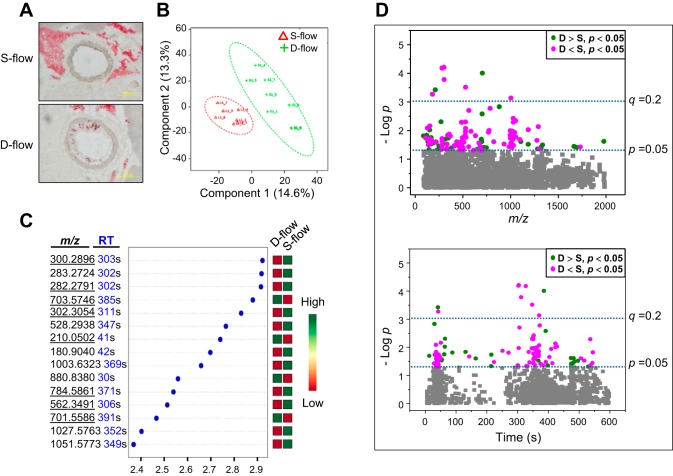Fig. 1.
Differences in plasma metabolites in mice with partial carotid ligation-induced disturbed flow (d-flow) compared with stable flow (s-flow) of sham ligation controls. A: representative images of carotid arteries of ApoE−/− exposed to s-flow or d-flow for 1 wk are shown. ApoE−/− mice operated with a partial ligation (generating d-flow) or sham (generating s-flow) and fed a high-fat diet for 1 wk were analyzed for plaque formation as a marker for atherogenic features. Oil-red-O staining results of frozen sections show that carotid aortic region exposed to d-flow due to ligation substantially stimulated plaque formation. B: PLS-DA score plot for high-resolution metabolomics data analysis of 8 s-flow (green) and 7 d-flow (red) mice. C: metabolomics analysis identified the top most significantly different 15 ions (top to bottom) and are shown with VIP (variable importance in projection) scores and an expression heat map (green, high; red, low) from PLS-DA models. Underlined m/z ions indicate ions that were matched with known chemicals by Metlin metabolite search [ ± 10 ppm, (M+H)+, (M+Na)+]. D: 128 significantly different ions (P < 0.05) between s-flow and d-flow are shown by Manhattan plots (magenta, decreased level by d-flow; green, increased level by d-flow; gray, no changes by d-flow), according to m/z (top) and retention time (bottom). Statistical significance of the data is indicated by P value of 0.05 and q value of 0.2.

